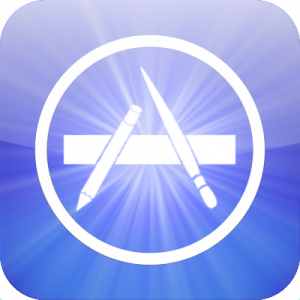However, developing apps for iOS involves more than just design, it’s about ensuring an exceptional user experience across a multitude of devices.
As Apple devices expand, catering to diverse screen sizes, resolutions, and user preferences becomes important.
From understanding the variability of iOS devices to mastering intricate layout techniques like Auto Layout and Size Classes, each step contributes to a holistic understanding of adaptivity in design.
For that purpose, partnering with a reputable iPhone app development company is imperative. Their expertise in creating adaptive designs that seamlessly cater to the diverse spectrum of Apple devices ensures a unified and user-centric experience.
This blog will discuss the complexities of crafting interfaces that smartly adjust to different screen sizes.
Key Aspects of iOS Device Variability
Overview of iOS Devices (iPhone, iPad, iPod Touch)
iOS devices encompass a diverse range, including iPhones, iPads, and iPod Touch. iPhones are compact, multi-functional smartphones catering to various sizes and models.
However, iPads, larger tablets, offer a more expansive canvas for immersive experiences, while iPod Touch serves as a media player without cellular features.
Screen Sizes, Resolutions, and Aspect Ratios
iOS devices exhibit varying screen sizes, resolutions, and aspect ratios. For example, iPhones range from smaller models like the SE to larger versions like the 14 Pro Max, each with unique resolutions and aspect ratios.
While iPads, from the Mini to the Pro series, display different sizes and resolutions, demanding adaptable design strategies.
Device Orientations (Portrait and Landscape)
iOS devices support both portrait and landscape orientations. Users can interact with apps in either orientation, influencing design considerations for layout and usability. Ensuring seamless transitions between orientations improving user experience and usability.
Pixel Density (Retina and non-Retina displays)
Apple devices feature varied pixel densities, including Retina and non-retina displays. Retina displays offer higher pixel density, delivering sharper visuals. Designers must optimize assets to maintain visual fidelity across devices, preventing blurriness or distortion in images and graphics.
How to Build Responsive Layouts for iOS Apps
Building responsive layouts for iOS apps involves a careful approach:
Utilize Auto Layout
Auto Layout is a constraint-based layout system that allows for the creation of flexible and adaptive interfaces.
Defining relationships and constraints between UI elements, ensures they adjust dynamically to different screen sizes, device orientations, and content changes.
Prioritizing constraints based on priorities and content hugging/compression resistance helps maintain consistent layouts across various iOS devices and orientations.
Implement Size Classes
Size classes categorize devices based on their dimensions (regular or compact) and allow developers to design adaptive layouts for different screen sizes.
You can also utilize size class-specific layouts, which allow you to tailor UI designs optimized for specific device categories, such as iPhones and iPads, ensuring a cohesive user experience.
Utilize Stack Views
Stack Views simplify the management of complex layouts by organizing UI elements vertically or horizontally.
They automatically adjust the arrangement and spacing of elements based on available screen space. However, the dynamic arrangement reduces the need for manual layout adjustments, streamlining the development process and ensuring consistency across devices.
Optimize for Dynamic Type
Dynamic Type accommodates users’ preferred text sizes, boosting accessibility. However, designing with dynamic type in mind ensures that text elements adapt gracefully to different font sizes. Which usually maintains readability and usability across various user preferences and accessibility settings.
Use Asset Catalogs
Asset Catalogs manage app resources like images, allowing developers to provide multiple versions of an image for different screen resolutions.
This ensures that images appear sharp and clear on various iOS devices, optimizing visual quality and reducing app size by delivering the appropriate resolution for each device.
Test Across Devices
Thorough testing on different iOS devices, including various iPhone and iPad models, using simulators or physical devices, validates the responsiveness and functionality of layouts.
However, testing helps identify and rectify layout issues, ensuring a consistent and error-free user experience across diverse device types and sizes.
Adopt Adaptive UI Patterns
Adaptive UI patterns like split views (especially for iPads) or adaptive grids allow the creation of interfaces that adjust intelligently to the available screen space.
These patterns optimize layouts for different devices and orientations, enhancing usability and user engagement.
Prioritize Accessibility
However, ensuring layouts adhere to accessibility standards is crucial. You can integrate features like VoiceOver, larger text sizes, and sufficient color contrast to ensure that users with varying abilities can navigate and interact with the app seamlessly, broadening the app’s reach and usability.
Benefits of Implementing Adaptive Designs
The following are the key benefits of developing adaptive designs for iOS apps:
Increase User Experience
Adaptive designs prioritize user satisfaction by ensuring that interfaces remain functional and visually appealing across multiple devices.
By optimizing layouts and content presentation, users encounter a seamless and consistent experience, regardless of the device they use. Which directly increases engagement, encourages longer interaction periods, and ultimately develops positive user feedback and loyalty.
Device Uncertainty
With adaptive designs, apps adjust dynamically to the diverse array of devices available in the market. This reduces the necessity to create multiple versions tailored to specific devices, streamlining development efforts. Which is a huge benefit and saves lots of time and resources.
Improved Accessibility
Adaptive designs accommodate users with diverse needs and preferences. They adjust elements such as font sizes, navigation methods, and content presentation to align with accessibility guidelines.
It makes the interface more inclusive and usable for individuals with disabilities or different technological capabilities.
Future-Proofing
These designs are inherently flexible, allowing them to adapt to new devices and screen sizes seamlessly.
By building adaptable interfaces, apps can better withstand technological advancements without requiring frequent redesigns or services, thus extending their relevance and usability over time.
SEO Benefits
Search engines prioritize user-friendly experiences, especially on mobile devices. Adaptive designs that provide a consistent and optimized experience across different devices tend to rank higher in search engine results. Which improves visibility and attracts more organic traffic.
Cost and Time Efficiency
Moreover, developing adaptive designs reduces the need for creating and maintaining multiple versions of the same app. This consolidation of efforts streamlines the development process, minimizing costs and time investments associated with managing separate interfaces for different devices.
Consistency in Branding
Adaptive designs maintain uniformity in branding elements and user interface components across devices. This consistency reinforces brand identity and recognition, ensuring that users experience the same look and feel irrespective of the device they use.
Higher Conversion Rates
When users encounter a seamless and user-friendly interface across devices, they are more likely to engage and interact consistently. This leads to improved conversion rates as users navigate through the app comfortably, increasing the likelihood of completing desired actions or purchases.
Summing Up
Hope, this article helps you understand the concept of crafting adaptive design for iOS apps. As we all know iOS apps have a premium audience and it’s essential to provide a seamless experience.
However, the process is not easy, but you can connect with the right UX|UI designer or app development company to streamline your process.
By embracing adaptivity, designers, and developers can create interfaces that exceed device boundaries, ensuring consistent functionality and engagement.
Professional Blogger and Content Writer



















































































































































































